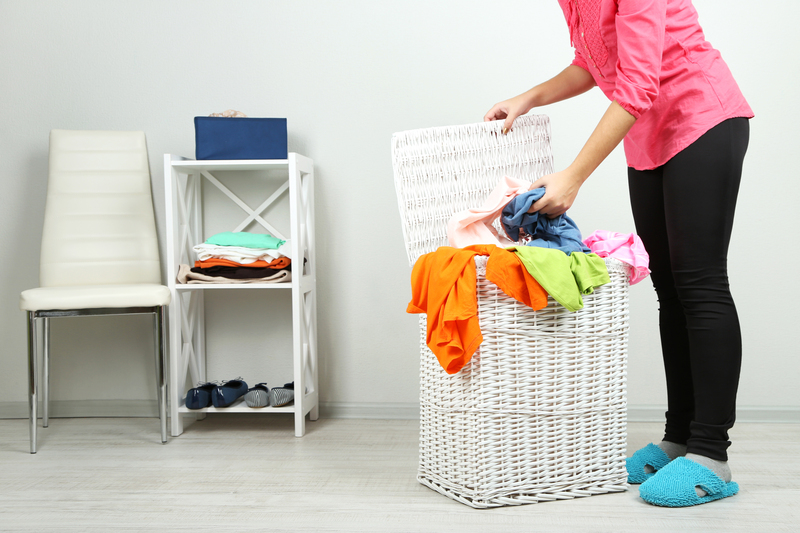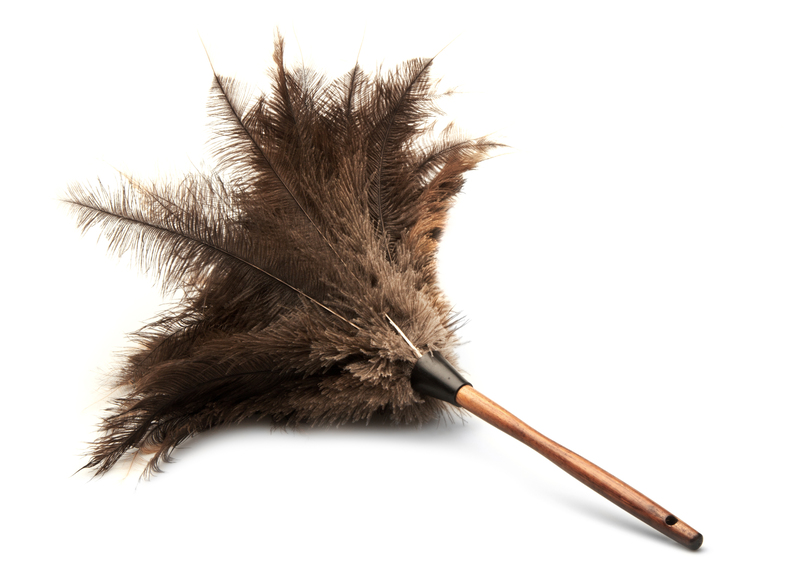Revitalize Your Home with Clean Carpets and Flooring
Posted on 30/09/2025
Revitalize Your Home with Clean Carpets and Flooring
Are you seeking a quick yet significant way to revitalize your living space? One of the most impactful strategies is ensuring your carpets and floors are meticulously clean. Clean flooring can completely transform the ambiance, contribute positively to your health, and increase your home's value. In this comprehensive guide, discover the remarkable benefits and essential techniques for achieving spotless carpets and floors that breathe new life into your home.

Why Clean Carpets and Flooring Matter
Upholstery, area rugs, hardwood, tile, or vinyl--every type of flooring accumulates dirt, allergens, and wear over time. Regular cleaning does far more than keep up appearances. It protects your home investment and fosters a welcoming atmosphere.
Key Benefits of Clean Carpets and Flooring
- Enhanced Indoor Air Quality: Carpets and floors act as filters, trapping dust, pollutants, and allergens. Deep cleaning removes these particles, improving the air you breathe.
- Extended Flooring Lifespan: Dirt, debris, and stains can degrade fibers and surfaces. Removal prevents premature aging or replacement costs.
- Stain & Odor Elimination: Spills, pets, and daily traffic cause persistent stains and odors--clean carpets and flooring can effectively eliminate them.
- Healthier Environment: Reducing bacteria, molds, and allergens lessens allergy and asthma triggers, making your home safer.
- Improved Aesthetics: Nothing beats the look and feel of freshly cleaned carpet or gleaming flooring.
Types of Flooring and Carpet Cleaning
Each type of flooring demands a unique cleaning approach. Get familiar with the best practices for carpets, hardwood, laminate, tile, and vinyl to effectively refresh your floors.
Carpet Cleaning: Best Practices
- Vacuum Regularly. Vacuuming at least twice a week removes surface dirt and prevents it from embedding deeper.
- Spot Clean Immediately. Address spills as soon as they occur to prevent staining and bacteria growth.
- Deep Clean Every 6-12 Months. Use hot water extraction or professional steam cleaning to restore carpets thoroughly.
- Consider Professional Carpet Cleaning. Experts have powerful equipment and solutions for all types of fibers and stains.
Hardwood Floor Cleaning
- Sweep and Dust Daily. Use a microfiber mop or soft broom to remove dust and debris.
- Use pH-Neutral Cleaners. Avoid water and harsh chemicals which can warp or dull your floors.
- Apply Polish or Sealant Annually. This protects the wood and maintains its natural luster.
- Immediate Spill Cleanup. Water or acidic liquids can stain or damage wood--wipe them up quickly.
Maintaining Tile and Grout
- Sweep and Mop Frequently. Tiles are tough, but dirt can scratch or dull their surface.
- Clean Grout Lines. Use a baking soda and water paste or specialty grout cleaner for bright, stain-free grout.
- Seal Grout Annually. Prevent permanent stains and moisture damage by sealing grout lines.
Laminate and Vinyl Care
- Sweep or Vacuum Regularly. Prevent debris accumulation that causes scratches.
- Mop with Damp, Not Wet, Cloth. Excess water can seep into seams and cause warping.
- Avoid Abrasive Cleaners. Use products specifically formulated for laminate or vinyl to avoid residue or scratches.
Deep Cleaning Methods for Carpets and Flooring
Whether you're preparing for a special event or conducting your spring cleaning, deep cleaning is essential. Here are proven ways to deep clean your carpets and floors for the best possible results.
Deep Cleaning Carpets
- Hot Water Extraction: Often called steam cleaning, this method injects hot water and cleaning agents into carpet fibers, then immediately extracts them along with dirt and stains.
- Dry Cleaning Powders: Spread dry cleaning powder, brush into the carpet, then vacuum--excellent for areas where moisture should be minimized.
- Shampooing: Machines mix cleaning solutions with water to scrub and remove embedded grime. Rinse thoroughly to prevent residue.
*Tip: Always let your carpet fully dry before moving furniture or walking extensively to prevent mold and odor formation.*
Deep Cleaning Hard Floors
- Use Floor-Specific Cleaners: Always match your cleaning solution to your floor type for lasting shine and protection.
- Scrub Stubborn Stains: For tile and grout, a soft brush and baking soda paste can erase most stains.
- Buff and Polish: Hardwood and some vinyl floors benefit from occasional buffing or polishing, restoring their vibrancy.
- Rinse Well: After mopping, always finish with a clean damp mop (where suitable) to remove any sticky cleaner residue.
DIY Solutions vs. Professional Cleaning
While routine floor and carpet care can often be done yourself, certain circumstances call for professional help.
When To DIY
- Regular vacuuming, sweeping, and mopping can be easily managed with home equipment.
- Natural cleaning solutions are effective for minor stains and spot cleaning (e.g., vinegar and water for tile, baking soda for odors).
- Protection and prevention routines, such as using mats at entrances and applying area rugs in high-traffic spots.
When To Hire Professionals
- Large or deep-set stains that standard cleaning can't remove.
- An annual deep clean for carpets to remove what household vacuums miss.
- After water damage or significant spills (to prevent mold growth under carpets or floors).
- Delicate or exotic materials like antique rugs, intricate tile, or high-end wood flooring.
Eco-Friendly and Health-Conscious Flooring Tips
As we become more aware of the effects of harsh chemicals, the preference for green cleaning of carpets and floors is rising. Eco-friendly cleaning routines protect your family, pets, and the environment.
Safe DIY Cleaning Solutions
- Vinegar and Water for tile and vinyl (avoid on stone and hardwood).
- Baking Soda for odor absorption on carpets and rugs.
- Lemon Juice can brighten tiles and freshen grout lines.
- Castile Soap diluted in water works well for sealed hardwood and vinyl.
Always spot-test any new solution on a hidden area before using widely, particularly on delicate flooring.
Green Professional Options
- Look for certified green cleaners who use biodegradable products and low-RVOC methods.
- Request hot water extraction or dry steam methods using only water and heat for chemical-free deep cleaning.
Preventing Dirt and Damage for Lasting Cleanliness
The best way to maintain fresh, clean flooring and carpets is to protect them from excessive dirt and wear in the first place.
Protection Strategies
- Use entryway mats both inside and outside doors to reduce the amount of dirt tracked in.
- Remove shoes indoors to prevent soil and bacteria from spreading.
- Place area rugs in high-traffic zones, under dining tables, and entryways for extra protection.
- Apply furniture pads to protect flooring against scratches and gouges.
Routine Maintenance Schedule
- Vacuum carpets and rugs at least twice weekly.
- Sweep hard floors daily, mop weekly or as needed, and spot clean often.
- Deep clean carpets and upholstery every 6-12 months, more often for homes with kids or pets.
- Reseal grout and hardwood floors annually for lasting protection.
Carpet and Flooring Trends to Enhance Your Home
Upgrading your flooring is a fantastic way to revitalize your home. Here are some of the latest trends blending style with function--and easy cleaning:
- Luxury Vinyl Plank (LVP)--Durable, waterproof, and designed to mimic real wood or stone, it's ideal for busy households.
- Eco-Friendly Carpeting--Made from recycled or natural fibers, these carpets are both beautiful and sustainable.
- Large-Format Tiles--Less grout lines mean a sleeker look and easier cleaning, perfect for open floor plans.
- Low-Pile, Stain-Resistant Rugs--Modern technology makes carpets more resilient and easier to maintain than ever.
- Engineered Hardwood--Offers the classic look of wood in a more durable, pet- and scratch-resistant format.

Frequently Asked Questions about Cleaning Carpets and Flooring
- How often should I deep clean my carpets?
Most homes benefit from professional or DIY deep cleaning every 6-12 months. Homes with children, pets, or allergies may need cleaning more frequently. - What is the best cleaner for hardwood floors?
Always use pH-neutral cleaners made for hardwood. Avoid excessive water or steam, which can damage the wood. - Can I use vinegar on tile and stone floors?
Vinegar works well on ceramic tile but can etch natural stone floors. Use stone-safe cleaners for marble, granite, or slate. - Are professional carpet cleaning services worth it?
Yes--especially for deeply embedded dirt, tough stains, or large areas. Professionals extend carpet life and deliver unmatched results.
Conclusion: Elevate Your Home with Pristine Carpets and Floors
Keeping carpets and flooring clean is a straightforward way to transform your living environment. Regular maintenance removes dirt and allergens and keeps your home looking and feeling its best. Whether you prefer DIY methods or enlist the help of professionals, revitalizing your floors is one of the best investments you can make in your home's value, comfort, and health.
With the tips and insights above, you're ready to refresh your carpets and flooring and enjoy a more vibrant, welcoming home for years to come.


